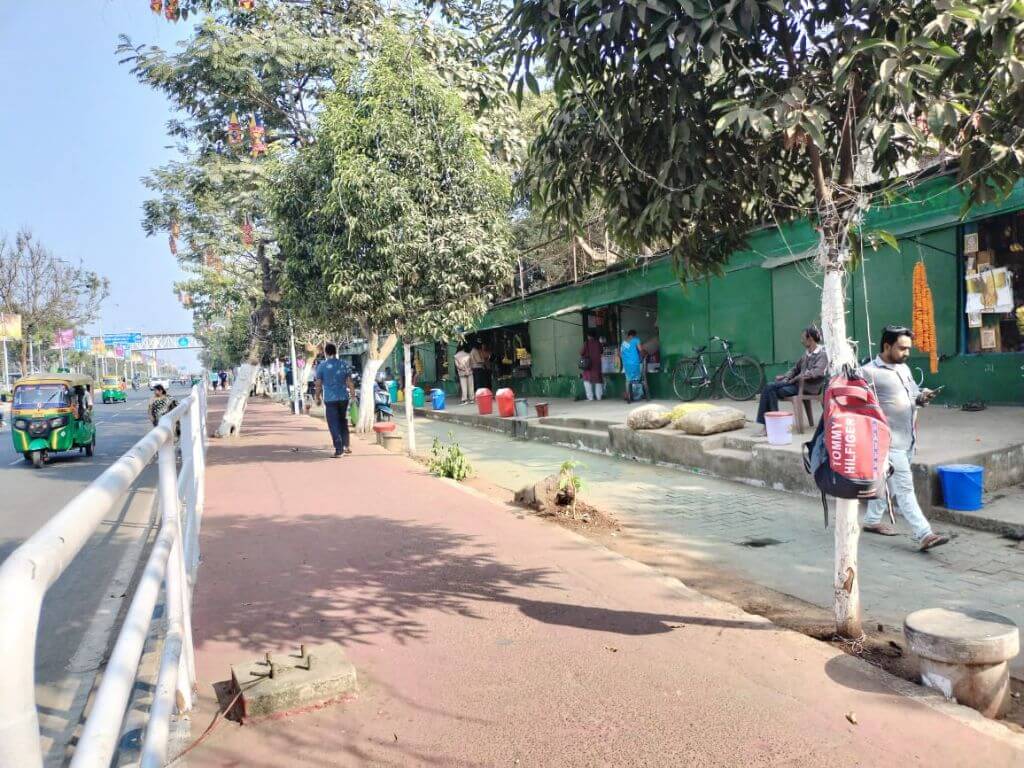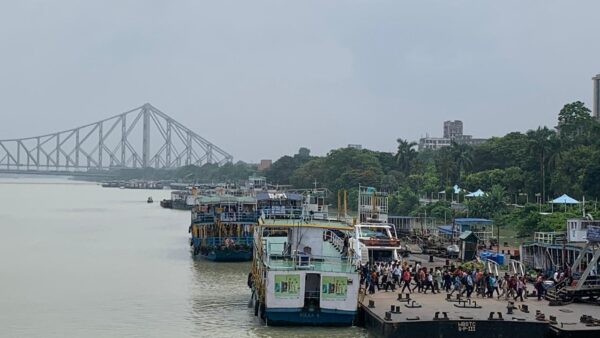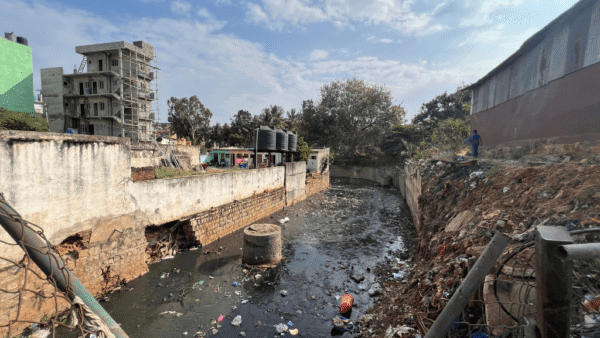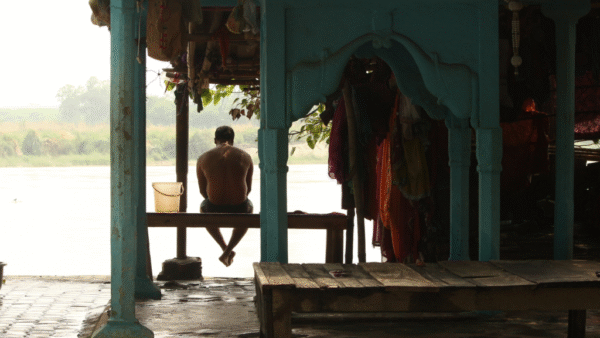Drive down any road in Odisha’s capital Bhubaneswar and among the many elements that catch the eye are organised and aesthetically pleasing rows of vending zones. The line of green cabins selling vegetables, fruits, flowers, tea and snacks, chicken, eggs and other essentials dots every ward in the city. The hawkers on carts too have a designated spot inside the city’s lanes so that the main roads are uncongested and do not disrupt traffic flow.
The pedestrian space along the vending zones gives easy access to customers without the hassle of walking in a maze of crowded hawkers. The neat and disciplined vending kiosks have all the basic facilities such as water and sewage which helps keep the area relatively clean and hygienic. This is different from the haphazard and chaotic street vending in a number of cities including large ones such as Mumbai and New Delhi.
Bhubaneswar has 28,000 registered vendors and another 4,000 are unregistered. “So far, only 1,500 have been allotted kiosks,” says Pratap Sahu, president of All Odisha Roadside Vendors’ Association (AORVA). Each of the 67 wards in Bhubaneswar Municipal Corporation (BMC) limit has three vending zones and each zone has between 30 and 100 kiosks.
In 2007, Anuja Kumar Pradhan was among the vendors who got kiosks. “I sell plants, saplings and seeds. I got a vending kiosk at Unit 2 with all facilities. It is convenient now and I don’t have to worry about BMC action,” says the 51-year-old man. The neat row of vegetable, tea and snacks and chicken shops in front of Kalinga Stadium has made it convenient for customers. “Earlier, hawkers used to sit near the footpaths. With the tea shop shed almost near the pavement, customers used to block the walking area. Now, it’s easy for me to walk and the area looks organised,” says Jyoti Murmu, 65, a resident of New AG Colony, in front of Kalinga Stadium.
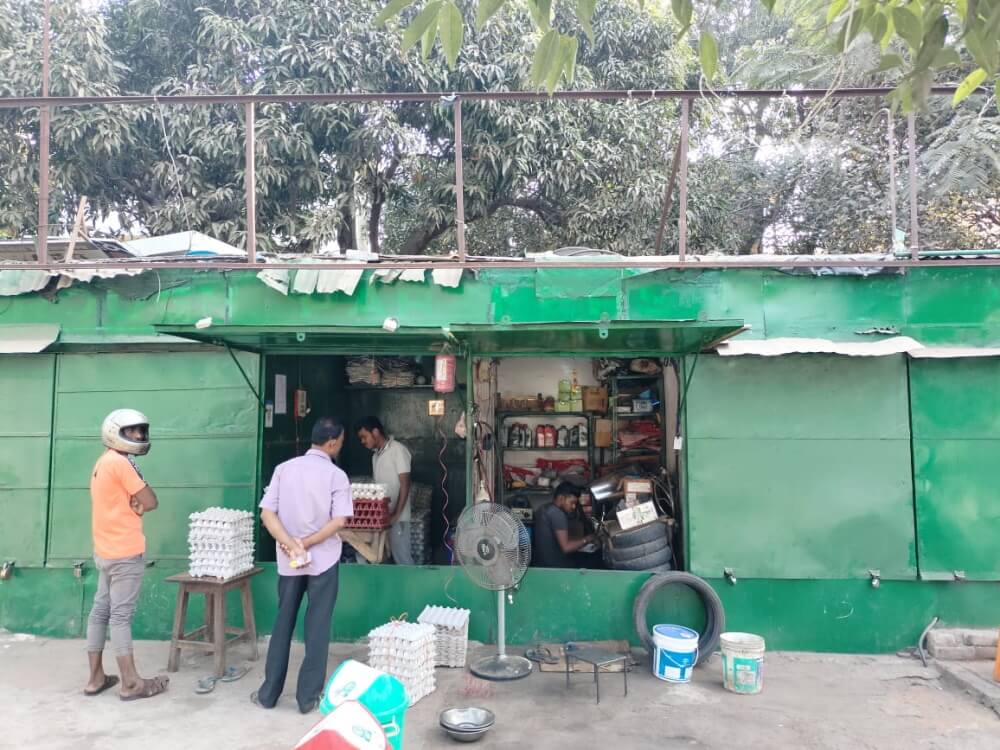
Photo: Shobha Surin
However, it was not always this organised. Bhubaneswar’s master plan by German-Jewish architect Otto Koenigsberger was based on neighbourhood units, each of them self-sufficient in amenities including a marketplace. Yet, over time as the city expanded physically and in population, street vendors were everywhere occupying pavements, street sides and around the neighbouring units. The expansion of the city, especially in the last 20 years, brought new migrants and a larger informal street economy. This, left unaddressed, could have resulted in the city having the familiar problems of overcrowding, taking over pedestrian or vehicular spaces, chaotic and filthy surroundings, and so on.
Bhubaneswar’s administration and the state government evolved a model to integrate this informal local economy into the city’s typology in such a way that hawkers or vendors are not seen as “encroachers” of a planned space but have spaces dedicated to their work. Lately, the Smart City project ensures the street vendors get a supportive environment for earning livelihoods, improving their socio-economic condition and catering to local people. However, this did not come as largesse from the authorities but has been the result of, or response to, a sustained struggle and protests by hawkers’ groups.
“The case of Bhubaneswar vending zone perfectly qualifies the theme of making market work for the poor. This is a pioneering lead taken to develop an exclusive market for the vendors which presents all the combinations needed for conducting a healthy business,” noted this research paper, “Aesthetic & organized shops, prime locations, clean surroundings, provision of electricity and above all imparting a peace of mind and sense of security among the street vendors. The new markets now hold a legal status.”[1]
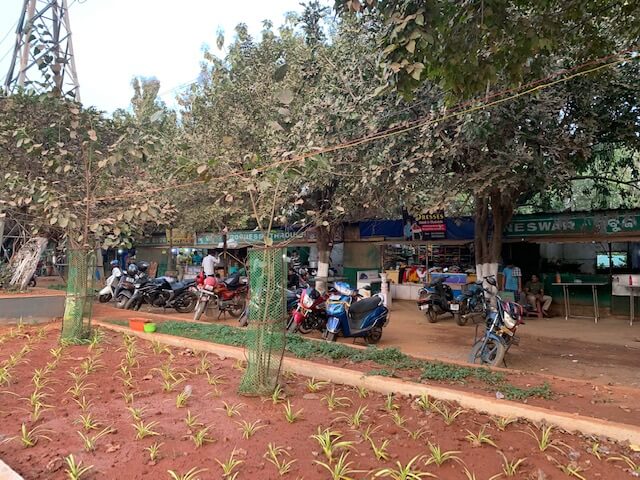
Photo: Shobha Surin
The policy and its implementation
Bhubaneswar, among the first cities in India to concede that street vendors are an integral part of the cityscape and work out a policy to allot space in the city’s typology, has 46 vending zones in all. These have a total of 1,500 kiosks that have been erected with the public-private partnership (PPP) model. Hawkers are allotted a kiosk after a process in which the vendors’ association conducts a survey which is verified and approved by the BMC. Each kiosk has basic amenities including space around it for buyers who do not have to negotiate street traffic.
This may not have been in Koenigsberger’s master plan but was a later response to the on-ground situation that was shaping up on Bhubaneswar’s streets and to the constant push by the vendors’ associations. The BMC has been creating vending zones with all the required facilities – water, electricity, dustbins. “Earlier, vending zones used to be set up anywhere but not now. We have streamlined it,” says Mayor Sulochana Das.
However, vendors say that there are too few of them. Das replies saying, “It takes time to identify the plot, and get it approved from the General Administration (GA) Department. Then only we can start our work to create vending zones. In all, there are 30 zones now and 37 more in the pipeline to cover 67 wards. We chose places that are large so that provisions can be made for parking. It was important to organise the vendors and beautify the city. There used to be a huge parking problem when vendors used to sit along the road.”
“The process of conceptualizing and designing the vending zone model was initiated through the partnership between town authorities (public) and street vendors (community),” notes this research paper on the subject.[2]
Bhubaneswar’s model policy of allotting kiosks to vendors was the outcome of street struggles. “This happened through several intensified protests,” says Sahu, the voice of the street vendors for more than 30 years. “We are continuing to protest and demand rehabilitation for the evicted hawkers.” Though a majority of vendors have been accommodated in the green kiosks, and more are being allotted as they are built in designated spaces, the community has also seen regular harassment by the authorities and forcible evictions that are the norm in most cities. The authorities say that only the unlicensed hawkers face eviction.
Sahu says street vendors have been harassed for years and the authorities take action against them without following the rule book. He cites Article 19(1)(g) in the Constitution of India 1949 which gives citizens the right to practise any profession, or to carry on any occupation, trade or business. The continuous protests by hawkers prompted Aparajita Sarangi IAS, the then Bhubaneswar Municipal Commissioner, in 2006 to have separate vending zones for hawkers. “Sixty vending zones were built in 2006-2007. The Bhubaneswar Municipal Corporation’s website gives the number as 46 as the previous ones have not been included in their record,” says Sahu.
Bhubaneswar had started building vending zones even before the 2014 Street Vendors (Protection of Livelihood and Regulation of Street Vending) Act. However, after Sarangi was transferred, the new commissioner did not pay enough attention to this and the city did not get new vending zones.
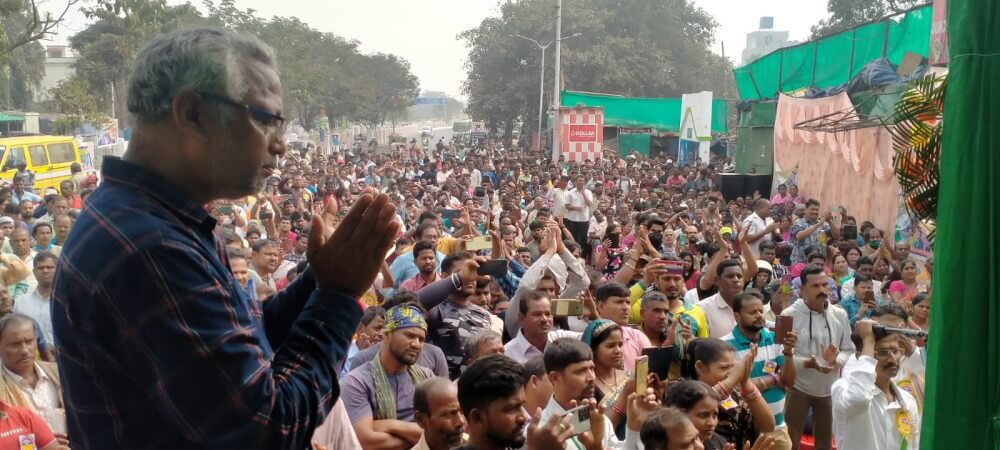
Photo: Pratap Sahu
No end to eviction
Despite the policy of vending zones and its implementation, Bhubaneswar has witnessed evictions. In preparation for the International Men’s World Cup hockey tournament, the BMC stepped up action and started evicting more hawkers. “In December 2022, nearly 15,000 roadside vendors were evicted. One vendor has at least four people dependent on him and so 60,000 people were affected. Moreover, as each vendor has at least two helpers in his stall, the eviction drive affected 1.20 lakh directly and indirectly,” says Sahu.
Anu Mishra, 61, who used to sell homemade rotis and curry, was among the ones evicted in December. Her stall at Chandrasekharpur used to be open from 6pm to 10pm. After the municipal officials dismantled her stall for the third time, Mishra, who is a registered vendor, is again scrambling to make ends meet. “I am again setting up my stall but I always fear action. The authorities do not give any notice or warning, they come suddenly and remove my stall. When I approach the authorities, they just promise me that it will not happen. I have also filed a case in court.”
The All Odisha Roadside Vendors’ Association is fighting for vendors like Mishra. The BMC has assured the association of rehabilitating the affected vendors under the Mukhyamantri Karma Tatapara Abhiyan (MUKTA) scheme. The association has been continuously protesting evictions which are against the 2014 law. No street vendor shall be evicted or, as the case may be, relocated till the survey has been completed and the certificate of vending is issued to all street vendors, says the Street Vendors (Protection of Livelihood and Regulation of Street Vending) Act, 2014.
“Although the national policy is in place, the authorities do not follow the law. I had to threaten the authorities with intensified protests during the hockey world cup and file cases. Then, the evictions stopped,” says Sahu, pointing to spots from where vending kiosks were removed to make a small lawn with decorative plants. The association is also pushing for its demand to provide vending kiosks to the evicted vendors.
Though a handful of vendors have got space in the vending kiosks, there are many waiting for rehabilitation.
Different city, same problem
The National Policy for Street Vendors asks state governments to remove the restrictive provisions in the Municipal Acts and make street vendors inclusive in the city plan or cityscape. But, this is hardly practised in cities. Civic officials take action against the poor marginalised street vendors whenever they want.
Mumbai has more than two lakh hawkers and their proliferation all across the city, mainly occupying pavements and, in some cases, even roads has brought them into direct confrontation frequently with civic authorities. New Delhi has a similar problem too, especially in the older areas of the city beyond the Lutyens well laid-out parts.
In Vadodara, the kiosks that have found favour in Bhubaneswar are not welcome. “The cabins given by the municipal corporation do not protect the vendors from severe heat. They should be left where they are, except when there is a traffic problem. Vadodara has around 44,000 street vendors,” says Jay Vyas, who has been working with the National Hawkers Federation since 2017 from Vadodara, “Allotment of cabins or kiosks is hardly democratic.”
He cites a case wherein the food vendors in front of Fine Arts College, Vadodara, were shifted to a tent-like structure nearby. The smoke gets trapped in the roof, which has eventually turned black. “The vendors in Vadodara get evicted now and then but we try to stop it…Eviction is against the law. And even if the authorities have to carry out eviction, they have to give three notices before getting the order for taking action,” Vyas says.
Lawmakers ignore law
The National Policy states that it “aims to ensure that urban street vendors, an important segment of the urban population, find recognition for their contribution to society and is conceived of as a major initiative for urban poverty alleviation by provision of and support to dignified livelihood”. The basic objectives of the policy are to give vendors legal status by amending, enacting, repealing and implementing appropriate laws and providing legitimate hawking zones in urban development/ zoning plans; to provide facilities for appropriate use of identified space including the creation of hawking zones in the urban development/ zoning plans; to make street vendors a special component of the urban development/zoning plans by treating them as an integral and legitimate part of the urban distribution system.[3]
Despite this, cities have seen frequent confrontations between hawkers and authorities as well as between hawkers and other residents. This, more often than not, emerges from space issues and land allotment, whether they have the right to be where they are or not. Bhubaneswar’s model attempts to address this issue though problems persist. Every city can integrate vendors into urban planning “only if there’s a political will,” according to Shaktiman Ghosh, general secretary of the All India National Hawkers Federation.
Kolkata has started making vending zones in Gariahat and Ballygunge but it is taking time as its roads are narrow. “We cannot replicate the Bhubaneswar model in other cities. The condition and requirement of each city is different and so we have different proposals for different cities,” says Ghosh. “None of the cities in the country has included vendors in the master plan. We have petitioned the court over this,”
The authorities need to recognise and acknowledge that vendors are an integral part of the economy, as laid down in the vending policy, and that they have the right to the city. Unless this is done, hawkers will continue to be harassed and forcefully evicted without rehabilitation. The union leaders have been urging officials to include vendors in the new master plan and “obey the law”.
Das stresses that hawkers are important for the economy and the city cannot do without them. “Our city is inclusive and is concerned about the marginalised. We cannot separate them from the master plan. We have to take them along while planning cities.”
Shobha Surin, currently based in Bhubaneswar, is a journalist with 20 years of experience in newsrooms in Mumbai. She has seen Bhubaneswar from close quarters as the quiet green city transformed into a bustling concrete jungle. An associate editor at Question of Cities, she is concerned about Climate Change and is learning about sustainable development.
Cover photo: Shobha Surin

